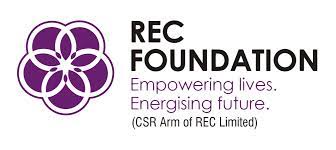Conservation Science and Innovation Laboratory (CoSI Lab)
The Himalayan range in Jammu & Kashmir and Ladakh has unique biodiversity & endemic wildlife population. Once a land of peaceful co-existence between humans and nature, and an example of the local community’s careful use of natural resources, this ecosystem is now threatened by an increase in illegal wildlife practices. These factors pose significant threats to sustainable development in the region. The Centre Of Research Development at the University of Kashmir understood the need to preserve this ecological community.With support from CSIR-Centre for Cellular and Molecular Biology (CSIR – CCMB), Atal Incubation Centre – CCMB and IKP Knowledge Park, a state-of-the-art ‘Conservation Science and Innovation Laboratory’ (CoSI) is being established. The establishment of CoSI-Lab is possible due to the generosity of Rural Electrification Corporation Ltd. Foundation under their CSR initiative.

The laboratory, housed at the University of Kashmir, will function as a field office and a knowledge hub for testing innovative technologies, providing transferrable skill training & forensic diagnostic services to interpret legally relevant evidence which can curb wildlife crime in the region. This will improve livelihood and regional sustainability. The CoSI-Lab firmly believes that it can enable successful partnerships in conservation by promoting excellence in conservation science, exchange of knowledge and skill development.
Features

State-of-the-art wildlife forensic biology lab dedicated to conservation

Institutional training & skill development programs in DNA technology for forest & law enforcement officials

Supporting field research initiatives by start-ups from AIC-CCMB & IKP Knowledge Park

Promoting an ecosystem of innovation & entrepreneurship in the region

State-of-the-art wildlife forensic biology lab dedicated to conservation

Institutional training & skill development programs in DNA technology for forest & law enforcement officials

Supporting field research initiatives by start-ups from AIC-CCMB & IKP Knowledge Park

Promoting an ecosystem of innovation & entrepreneurship in the region
Goals and Outcomes
This project will benefit biodiversity conservation in the region and society at large. Our long-term goal is to decrease crimes against wildlife. Success would be evaluated based on the present status and the change achieved in measurable criteria. Some of the criteria for successful outcomes are:
- Significant reduction in time taken for sample analysis, report generation and submission
- Providing training and sensitization programs at the centre
- Providing a platform for research & improving population monitoring techniques, DNA tools and technologies, and publication of SOPs, manuals, booklets and peer-reviewed reports in national and international journals
- MoUs with Department of Wildlife Protection of Jammu & Kashmir and Ladakh UTs, and other departments of the UT
